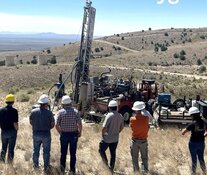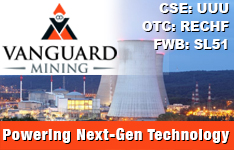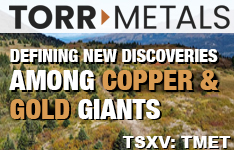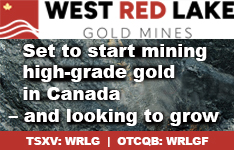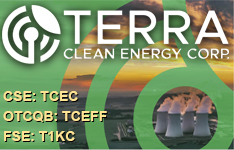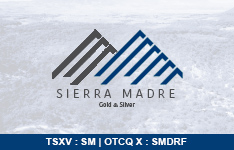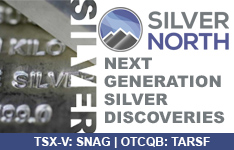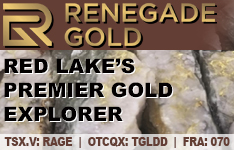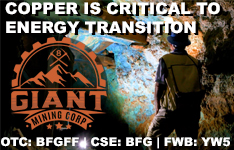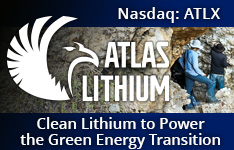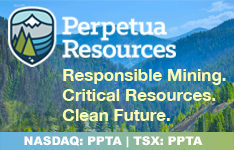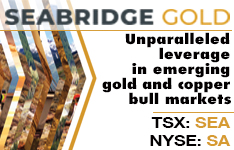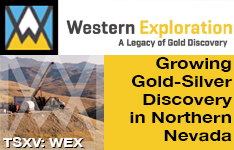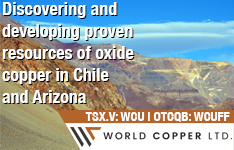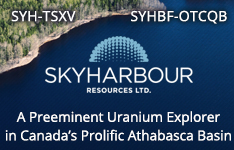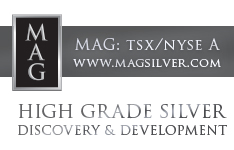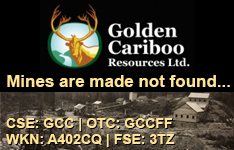Global rare earth markets faced mounting pressure in July as China's export restrictions led to sharp regional price differences and renewed concerns over supply chain security. Rare earth elements (REEs), a group of 17 metallic elements essential for technologies such as electric vehicles, renewable energy systems, and defense equipment, are not geologically rare but are difficult and costly to process.
According to Benchmark Mineral Intelligence on August 6, export restrictions imposed by China created a stark bifurcation between domestic and international prices. In Europe, terbium oxide prices were assessed at 267% higher than comparable prices in China. Dysprosium oxide reached US$800 per kilogram in Europe, while terbium oxide climbed to US$3,625 per kilogram. Benchmark reported that "spot market activity was sporadic, with buyers only accepting offers when absolutely necessary due to the high prices."
China's domestic market remained steady, while European heavy rare earth oxides continued to command premiums. Prices for light rare earth oxides, including praseodymium and neodymium (commonly referred to as PrNd), rose 14.22% month-on-month in China in July. Benchmark noted that a U.S. Department of Defense contract with MP Materials Corp. (MP:NYSE) set a minimum price floor of US$110 per kilogram for PrNd, signaling sustained government involvement in securing supply chains.
Concerns extended beyond pricing. China quietly issued its first mining and smelting quotas of 2025, without disclosing details, reinforcing its policy of tightly controlling rare earth supply. A recent report from Hallgarten & Company stated that "the monopoly of Chinese companies on the world market necessitates the creation (revival) of production facilities for the separation of REE by other countries."
China's Market Dominance
China accounted for approximately 270,000 tons of rare earth production in 2024, nearly 70% of global supply, according to industry data. By comparison, U.S. output was about 45,000 tons, while Australia and Myanmar produced 13,000 tons and 31,000 tons, respectively. Analysts noted that China's dominance has been reinforced not only by mining but also by its control of refining technology, which many Western countries abandoned decades ago."
The geopolitical importance of rare earths was highlighted in bilateral talks between India and China in August. A source told Reuters, as cited in an August 19 article, that Chinese officials assured India they were "addressing three key Indian concerns — the need for fertilizers, rare earths and tunnel boring machines." The discussions followed broader trade agreements to resume direct flights and expand economic ties.
In the United States, the Department of Defense used a provision of the Cold War-era Defense Production Act to become the largest shareholder in MP Materials, the operator of the nation's only rare earth mine in California. According to E&E News on August 18, the multibillion-dollar deal included a US$150 million loan to add heavy rare earth separation capacity and a guaranteed price floor to support production. A Pentagon spokesperson told the outlet the arrangement aimed to "strengthen critical minerals production" while countering China's market dominance.
Western Governments Seek Supply Alternatives
The concentration of rare earth production in China has created urgency among Western governments and companies to develop alternative sources. According to Hallgarten & Company, "countries that widely use REE products, but do not produce them, become absolutely dependent on prices and supplies from China".
Western producers face technical and financial barriers in scaling up. The processing of rare earths requires specialized extractants, ion-exchange resins, and multi-stage separation facilities that are costly and time-intensive to establish. China has maintained a strategic advantage through lower labor costs, shallow and less radioactive ore deposits, and decades of investment in refining technology.
Despite these challenges, projects in the United States, Australia, and Europe are moving forward, often with government backing. The U.S. Department of Defense invested more than US$540 million to support domestic and allied rare earth supply chains, while Australia has advanced its position as a leading source of light rare earths such as neodymium and praseodymium.
The immediate catalyst for further investment has been China's continued use of rare earths as leverage in trade disputes. A report from GIS noted that the U.S. imported about 96% of its rare earths from China, with automakers and defense companies facing risks of supply disruptions. The report added that "China effectively maintains its monopoly for a decade," underscoring the long-term nature of the challenge.
With demand for electric vehicles, renewable energy infrastructure, and advanced defense systems expected to remain strong, governments in North America and Europe are working to reduce reliance on Chinese supply. However, analysts cautioned that building independent rare earth processing capacity will require substantial time, funding, and coordinated policy support.
As concerns over supply concentration have grown, several companies have emerged at the center of efforts to build rare earth capacity outside China. These firms represent different approaches, ranging from mining and refining to magnet production and recycling. Their activities are being closely watched by markets and policymakers alike, as they illustrate both the opportunities and the challenges of establishing independent supply chains in North America, Europe, and allied nations.
Tactical Resources Corp.
Tactical Resources Corp. (RARE:TSX; USREF:OTC) is emerging as a U.S.-focused rare earth developer with ambitions to become a significant contributor to North America's supply chain security. The company's flagship Peak Project, located in Texas's Sierra Blanca Complex, gives it exclusive rights to acquire rare–earth–enriched tailings and stockpiled materials from the Sierra Blanca Quarry. This project is notable as one of only a handful of hard rock Direct-Leach-Extractable rare earth ventures in the world, supported by existing permits and access to extensive infrastructure, including rail, water, and power.
 Streetwise Ownership Overview*
Streetwise Ownership Overview*
Tactical Resources Corp. (RARE:TSX; USREF:OTC)
In August 2024, Tactical announced a definitive business combination with Plum Acquisition Corp. III, a Nasdaq-listed SPAC, implying a pro forma enterprise value of approximately US$589 million. Upon closing, expected in late 2024, the combined entity will list on the Nasdaq under the ticker "TREO," with Tactical shareholders rolling their ownership into the new company.
The transaction, originally implying a pro forma enterprise value of about US$589 million, has since been amended multiple times to reflect evolving market and regulatory requirements. The most recent amendment, announced on July 31, 2025, introduced transfer restrictions on 80 to 85% of shares issued to Tactical shareholders, locking them up for six months following completion of the amalgamation. The amendment also extended the outside date for closing the deal to July 30, 2026, though the parties reiterated their expectation that the transaction could be completed in the fourth quarter of 2025, subject to shareholder, court, and regulatory approvals.
CEO Ranjeet Sundher has said the business combination will provide Tactical with the resources to advance the Peak Project without the multibillion-dollar commitments and decade-long timelines often associated with mine development. With China producing nearly 70% of the world's rare earths, Tactical's U.S.-based supply model is being positioned as a way to strengthen domestic supply chains and reduce reliance on overseas critical mineral sources.
According to Refinitiv, 2.36% of Tactical Resources is held by management and insiders. The rest is retail. The company has a market cap of CA$18 million with 34.83 million free float shares.
Rare Element Resources Ltd.
Rare Element Resources Ltd. (REEMF:OTCQX) is advancing the Bear Lodge Rare Earth Project in northeast Wyoming. The Bear Lodge property, which the company owns outright, is regarded as one of the largest disseminated rare earth occurrences in North America, with a history of gold exploration alongside rare earth development. According to a U.S. Geological Survey report, the district contains a significant concentration of critical elements such as neodymium and praseodymium, which are used in high-strength permanent magnets essential for electric vehicles, wind turbines, and defense technologies.
 Streetwise Ownership Overview*
Streetwise Ownership Overview*
Rare Element Resources Ltd. (REEMF:OTCQX )
The company's most recent update, released on July 17, 2025, detailed progress on its rare earth processing and separation demonstration plant in Upton, Wyoming. Following a comprehensive review of piping, electrical systems, and construction materials, Rare Element Resources announced that additional rework and equipment upgrades were required before commissioning. The company stated that plant operations are now expected in the first quarter of 2026. Once operational, the facility is designed to run for up to 10 months and produce as much as 10 tons of separated neodymium/praseodymium oxide. Chief Executive Officer Ken Mushinski said the company's proprietary technology, paired with the Bear Lodge deposit, could provide a foundation for U.S. rare earth needs.
In addition to its technical progress, Rare Element Resources has attracted attention from U.S. policymakers. On June 24, 2025, CEO Ken Mushinski testified before the U.S. House Committee on Small Business in a hearing on critical minerals, emphasizing the importance of diversified supply chains. Earlier in the year, the company received a non-binding letter of interest from the Export-Import Bank of the United States (EXIM) for potential debt financing of up to US$553 million to support the Bear Lodge Project's development. This expression of support aligned with an executive order by President Donald Trump to expand domestic mineral production and reduce reliance on foreign suppliers.
Analyst coverage remains limited, though the Wall Street Journal reported a single "Buy" rating in recent months and a price target range of US$1.61, compared with a recent price of US$1.04.
Refinitiv reports that Synchron owns 69.89% of Rare Elementy Resources. 0.96% is held by management and insiders with 0.04% going to institutions. The rest is retail. Rare Element has a market cap of US$536.78 with 150.46 million free float shares.
Energy Fuels Inc.
Energy Fuels Inc. (EFR:TSX; UUUU:NYSE.American) was one of the largest uranium producers in the United States and held in situ recovery, or ISR, projects that used solution mining to extract uranium from sandstone aquifers without conventional open-pit or underground mining. The company also owned conventional uranium assets, including the White Mesa Mill in Utah, and stated that its U.S. portfolio provided more than 11.5 million pounds of annual production capacity, with additional mines on standby that could be advanced as market conditions allowed. According to company materials, Energy Fuels viewed this footprint as strategically important given that the United States had been the world's largest consumer of uranium.
 Streetwise Ownership Overview*
Streetwise Ownership Overview*
Energy Fuels Inc. (EFR:TSX; UUUU:NYSE.American)
On August 21, Energy Fuels announced that it had produced its first kilogram of dysprosium oxide at pilot scale at the White Mesa Mill. Dysprosium and terbium were heavy rare earth oxides, a subset of the 17 rare earth elements used to improve the high-temperature performance of permanent magnets in electric vehicles, wind turbines, and defense systems.
The company reported 99.9% purity for its dysprosium oxide and said it expected to continue pilot output at about two kilograms per week, with initial terbium oxide samples targeted for the fourth quarter of 2025 and a plan to install larger scale heavy rare earth separation capacity at White Mesa by the fourth quarter of 2026. Energy Fuels stated that the pilot material originated from monazite mined in Florida and Georgia and that multiple magnet manufacturers and original equipment makers had requested samples for validation.
In a separate August 6 update, the company said it had commissioned a commercial light rare earth circuit that produced neodymium-praseodymium oxide and that rising European prices for heavy oxides, including dysprosium and terbium, reflected scarce ex-China supply.
Energy Fuels also reported second-quarter 2025 uranium operations, including finished U3O8 production at the White Mesa Mill and ongoing mining at its Pinyon Plain and La Sal complexes, and outlined guidance for additional processing in late 2025 and early 2026. Management said the company ended the quarter with no debt and more than US$250 million of working capital, along with inventories of uranium, vanadium, and separated rare earth products held for future sales, and indicated that engineering work continued on a Phase 2 expansion to increase rare earth throughput at White Mesa, subject to investment decisions.
Energy Fuels received positive attention from multiple research firms in 2025. On January 19, Christopher Ecclestone of Hallgarten & Company initiated coverage with a "Long" strategy and set a 12-month target price of US$11.50, representing 121% upside from the US$5.21 share price at the time. Ecclestone emphasized the company's rapid move into rare earths and heavy mineral sands, calling the White Mesa Mill the "epicentre of change" and noting its strong balance sheet with US$183 million in working capital as of September 2024.
Later in the year, Red Cloud Securities published an updated analysis on August 8. Analyst David A. Talbot, Managing Director and Head of Equity Research, reiterated a "Buy" rating and increased his target price to CA$17.00 per share, up from CA$16.50. He cited Energy Fuels' leading position as both a uranium producer and an emerging rare earth player. Talbot noted improving financial performance in Q2 2025, including lower costs, higher grades at the Pinyon Plain mine, and growing inventories. He also pointed to advancing rare earth capabilities at White Mesa and highlighted upcoming catalysts such as the Donald JV final investment decision in H2 2025 and Toliara permitting in 2026.
A separate report from H.C. Wainwright, released on August 12, also reiterated a "Buy" rating with a price target of US$9.75 per share. The firm credited Energy Fuels' strategic acquisitions, strong uranium production profile, and expansion into rare earth separation as supporting long-term growth prospects.
Refinitiv reports that 63.34% of Energy Fuels is held by institutions with Sprott Asset Management LP holding the most with 6.96%, followed by Alps Advisors with 6.64% and Mirae Asset Global Investments with 4.76%. Management and insiders hold 1.81%. The rest is retail. The company currently has a market cap of US$1,967.66 million with 226.34 million free float shares.
NioCorp Developments Ltd.
NioCorp Developments Ltd. (NB:TSX; NB:NASDAQ) is advancing the Elk Creek Critical Minerals Project in southeast Nebraska, one of the only U.S.-based projects targeting large-scale production of multiple U.S. government-designated critical minerals: niobium, scandium, titanium, and potentially magnetic rare earth elements (NdPr, terbium, and dysprosium). The Elk Creek deposit is among the highest-grade niobium resources under development in North America and hosts the largest indicated terbium resource and the second-largest dysprosium and NdPr resources in the United States.
 Streetwise Ownership Overview*
Streetwise Ownership Overview*
NioCorp Developments Ltd. (NB:TSX;NB:NASDAQ)
Niobium is primarily used in high-strength, low-alloy steels for automotive, pipeline, and structural applications; scandium is vital for lightweight aluminum-scandium alloys and solid oxide fuel cells; titanium is critical for aerospace, defense, pigments, and medical implants; and magnetic rare earths underpin permanent magnets used across electric vehicles, wind turbines, and defense systems.
The project is fully permitted for construction and supported at the federal, state, and local levels. In 2025, NioCorp raised more than US$65 million in equity financings and secured up to US$10 million in U.S. Department of Defense Title III program funding to support scandium metal demonstration, Al-Sc alloy work with a major aerospace contractor, and process engineering upgrades to add rare earth products. The company has also cleared the first stage of Export-Import Bank (EXIM) review for up to US$800 million in potential debt financing, while the UK Export Finance (UKEF) and Germany's UFK program have each expressed interest in supporting an additional ~US$200 million in guarantees.
Commercial progress has been steady: roughly 75% of planned ferroniobium output is already covered by long-term offtake agreements with Traxys, CMC Cometals, and ThyssenKrupp Metallurgical Products, while Traxys has also committed to scandium purchases. Discussions with global automaker Stellantis continue regarding a potential supply agreement for rare earths.
Recent developments underscore the project's momentum. On August 12, NioCorp completed Phase I of a drilling campaign aimed at upgrading reserves, while also appointing mining industry veteran Ernest Cleave as Senior Vice President of Business Development. The updated feasibility study under preparation will incorporate the expanded resource base, engineering refinements, and the potential addition of rare earth products.
Seeking Alpha published an analysis in July 2025 recommending a "Hold" rating for NioCorp stock. The commentary noted the company's strong offtake agreements and strategic alignment with critical mineral demand trends, while also highlighting the challenge of raising required financing amidst sector volatility.
According to the Investing News Network, NioCorp Developments is advancing the Elk Creek Project in Nebraska, home to North America's highest-grade niobium deposit under development and significant scandium potential. A 2022 feasibility study outlined improved ore grades, extended mine life, and enhanced economics across niobium, scandium, and titanium. Metallurgical testing further demonstrated the project's ability to recover high-purity magnetic rare earth oxides at rates exceeding 92%, strengthening its potential as a domestic source of critical materials.
Refinitiv lists Niocorp's ownership with 23.41% held by institutions. Of those, Citadel Advisors owns 5.19% and BlackRock holds 3.17%. Management and insiders hold 4.17%. The rest is retail. The company has a market cap of US$291.32 million and 69.62 million free float shares.
Aclara Resources
Aclara Resources (ARA:TSX) is building a vertically integrated "mine-to-magnet" supply chain to deliver heavy rare earths outside of China. Its strategy is centered on two ionic clay projects, the flagship Carina Project in Brazil and the Penco Module in Chile, supported by a U.S.-based separation plant and a joint venture with CAP S.A. to produce rare earth metals and alloys. Together, these assets could supply approximately 16% of China's current Dy/Tb output and help meet up to 50% of U.S. demand for these critical inputs in electric vehicles by 2030.
Aclara's patented Circular Mineral Harvesting process underpins its ESG credentials. The method recycles more than 95% of water and reagents, eliminates liquid discharge, and enables full revegetation of mined areas. Pilot operations in both Chile and Brazil have validated the scalability of the process, demonstrating production of high-purity mixed rare earth carbonates with minimal environmental impact.
On August 11, the company announced a strategic partnership with Virginia Tech to establish a rare earth separation pilot plant in Virginia. The facility is designed to showcase Aclara's solvent extraction flowsheet, producing over 99.5% pure NdPr, Dy, and Tb. This collaboration also provides a U.S. footprint for processing, furthering Aclara's aim of supplying North America with critical minerals through a secure, geopolitically independent supply chain.
Backed by Brazil's US$1 billion national rare earths initiative, Aclara expects the Carina Project to reach commercial production by 2028. With a planned 22-year mine life and the potential to deliver material for millions of EVs annually, the company is positioning itself as a long-term, sustainable supplier to global clean energy and defense markets.
From the Stormcrow Capital report on Aclara Resources written July 1, analyst Dr. Jon Hykawy initiated coverage with a "Speculative Buy" recommendation and set a target price of CA$1.60 per share. The report highlights Aclara's Carina Project in Brazil as a key driver, underpinned by its ionic clay resource, ESG-friendly Circular Mineral Harvesting technology, and strategic importance for global heavy rare earth supply chains.
According to the company, Aclara's largest shareholder is New Hartsdale Capital Inc., holding approximately 80.3 million shares, or 36.5% of the company. Hochschild Mining owns about 42.8 million shares (19.4%), while Chilean partner CAP controls 22.2 million shares (10.1%). The management team and board of directors collectively hold nearly 9.8 million shares (4.5%), ensuring alignment with shareholders. The remaining 64.9 million shares (29.5%) are widely held, bringing the total outstanding to roughly 220 million shares. The company has a current market cap of CA$231.66 million.
| Want to be the first to know about interesting Gold investment ideas? Sign up to receive the FREE Streetwise Reports' newsletter. | Subscribe |
Important Disclosures:
- James Guttman wrote this article for Streetwise Reports LLC and provides services to Streetwise Reports as an employee.
- This article does not constitute investment advice and is not a solicitation for any investment. Streetwise Reports does not render general or specific investment advice and the information on Streetwise Reports should not be considered a recommendation to buy or sell any security. Each reader is encouraged to consult with his or her personal financial adviser and perform their own comprehensive investment research. By opening this page, each reader accepts and agrees to Streetwise Reports' terms of use and full legal disclaimer. Streetwise Reports does not endorse or recommend the business, products, services or securities of any company.
For additional disclosures, please click here.




